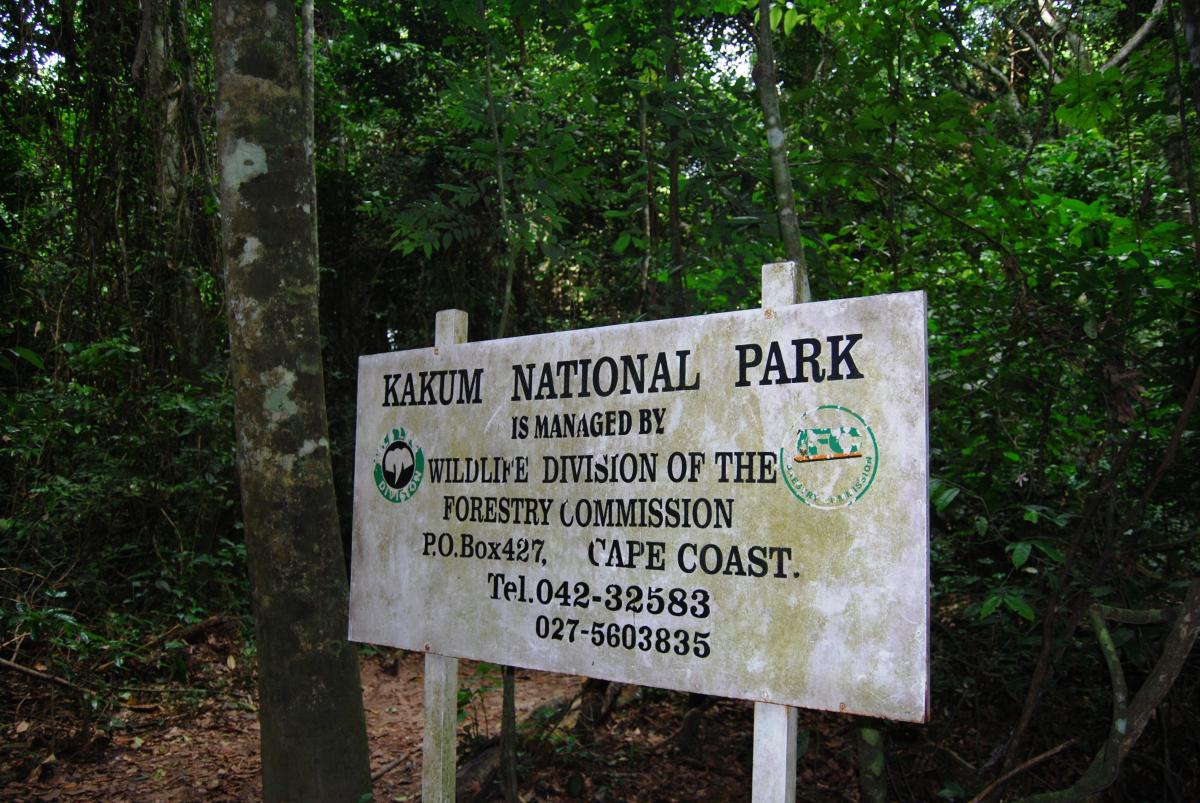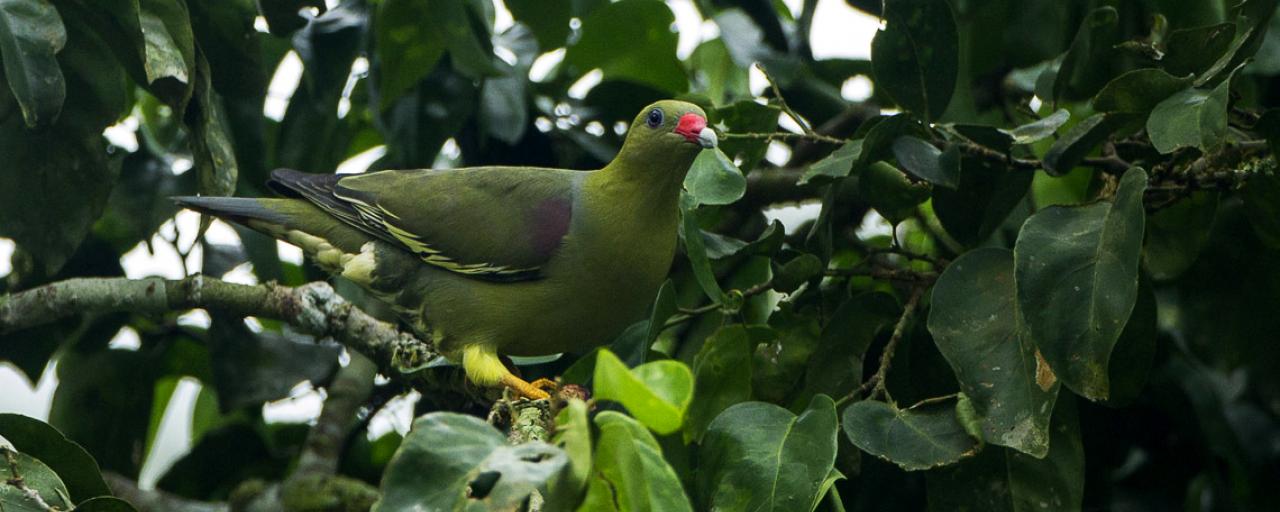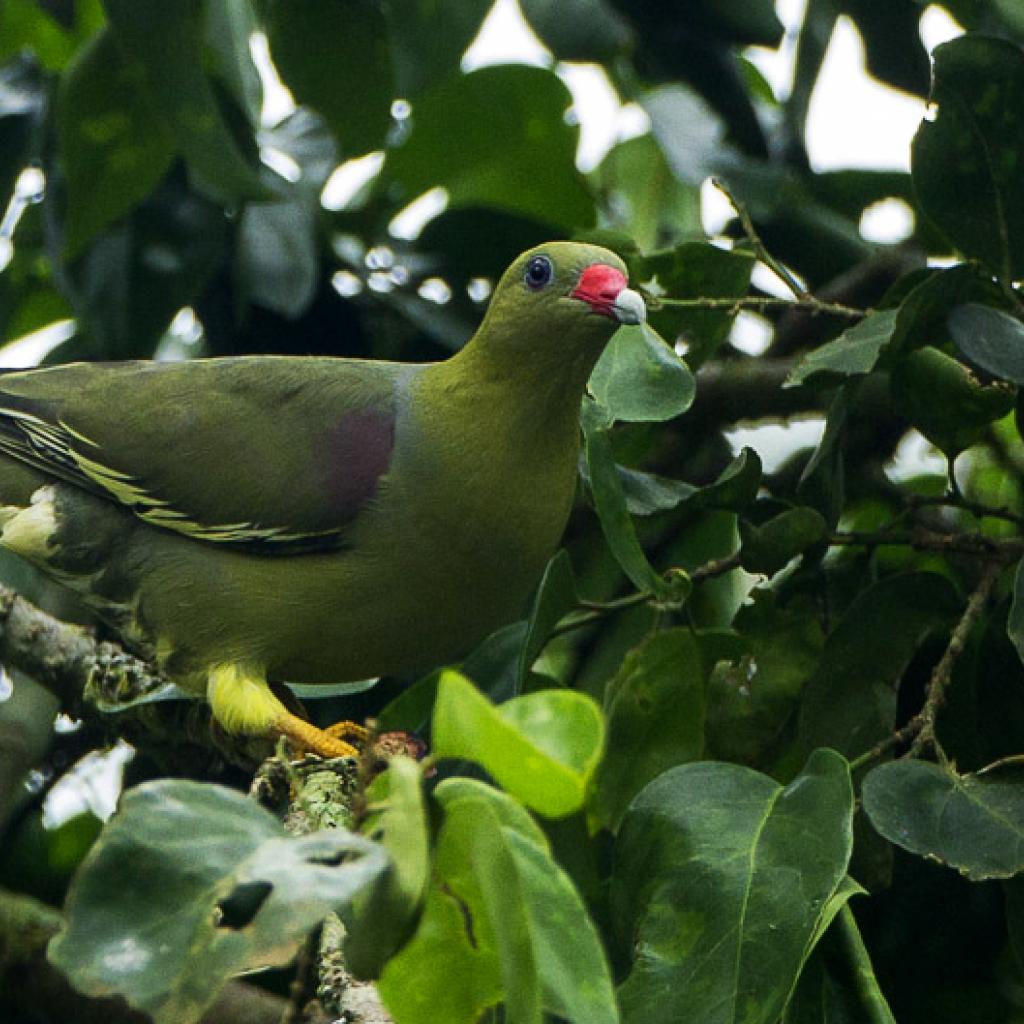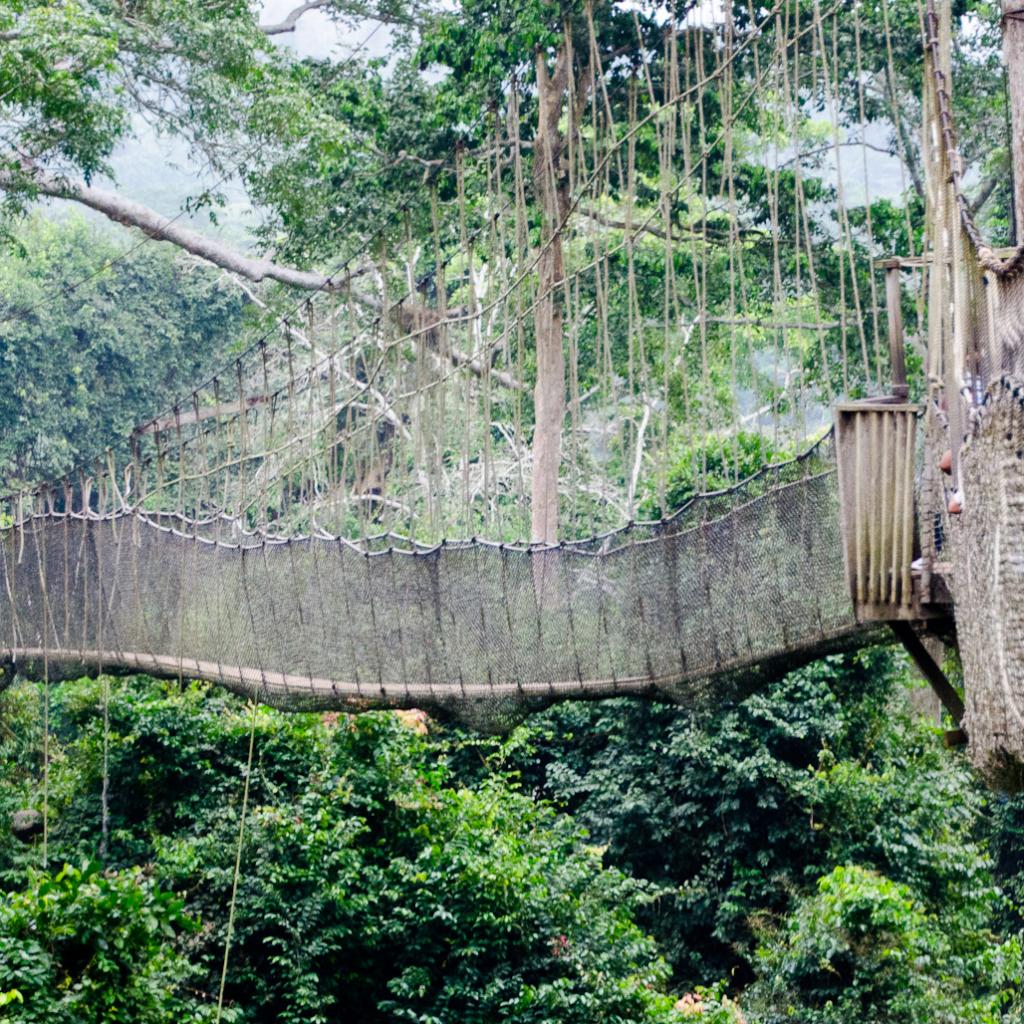The Kakum National Park, located in the Cape Coast hinterland, covers an area of 375 sq. Km and protects a large stretch of virgin rainforest in Ghana.
Originally intended as a forest reserve, in 1931 the Kakum area was not open to the public and, a part of it was used for timber and deforestation, but was threatening to irreparably deface this stretch of coastal rainforest.
Subsequently the area of Kakum was declared protected and was joined to the contiguous Assin Attandaso Reserve, to form the wide Kakum Conservation Area.
The area of Kakum, at a later time, with the intervention and support of local communities, was declared a national park in 1992.
The deforestation of the '70s and' 80s fortunately has compromised, not irremediably, only partially the forest, that remains, even today, for the most part in pristine conditions; the predominant type of vegetation is the humid rainforest, both virgin and semi-deciduous, and characterized by high rainfall and high humidity, with an average of 90%.
The diversity of Kakum flora is such that the number of registered plant species exceeds 200 units per 1 square hectare.
The forest in the Kakum National Park is both primary and secondary, the difference being that the primary forest is pristine and virgin, while the secondary forest has been somehow "disturbed" by natural or human events and is recovering from these events.
Usually the primary forest has a covering, or canopea or canopy, complete that makes little light filter down to the ground, the secondary forest does not have complete coverage, but is characterized by smaller trees and the light filters through to the soil, allowing the growth of numerous pioneer species.
The vertical layers of the vegetation of a forest
The forest vegetation is divided into five broad vertical layers:
Soil
The first layer is at ground level and consists of a sparsely vegetated floor dominated by herbaceous plants.
Shrubs
Above the ground there is the second level, characterized by a layer of bushes that can reach about 4 meters in height.
Foliage
The foliage is the third layer and corresponds to the propagation of trees that reach a height of about 18 meters, above which is the main closed crown of the largest trees, typically about 40 meters high.
Coverage
The roof is made up of emerging trees, that are standing above the others in height, many of them very old, that reach a height of up to 65-70 meters.
Leafage
This layer is made up of the leafy part of the trees, where the leaves are located.
The Kakum National Parkis home to about 100 species of mammals and houses the highest concentration of forest elephants, estimated at about 250 specimens, as well as rare species such as the bongo antelope, the giant forest hog, six types of duikers, the leopard, various flying squirrels and numerous other species.
There are also several primate species, some of which are of particular importance, such as the Diana Monkey and the Western black-and-white colobus and the olive colobus or Van Beneden colobus.
The Kakum has been classified as an Important Bird Area by Bird Life International, due to the presence of numerous bird species living in the area.
Over 250 species of birds have been recorded, including 8 endangered species, 9 species of hornbill, the rare African gray parrot and the white-breasted guineafowl.
The overall extension of the Kakum Conservation Area is also home to around 650 species of butterflies, more than those found throughout Europe, including two endemic species: the Diopetes kakumi, discovered in January 1994 and the Hypolycaena kakumi.





